Ecosystem Collapse
Outline
What is an “Ecosystem Collapse”?
I’ve been on a quest to find and understand ecosystem collapses. I want to see biological ripple effects. I want to get a feeling for how extensive and how severe ecosystem collapses are. And I wanted to find cascading collapse examples, if they exist. I am still learning, but by now I have read several papers on the topic of ecosystem degradation so I thought I would share my in-progress thoughts -
Some definitive examples of ecosystem collapse exist:
Kelp Forest to Sea Urchin Barrens
10.1126/science.aad8745 and https://www.science.org/doi/10.1126/sciadv.aau7042
The clearest example I have is the total disappearance of kelp forests into sea urchin barrens off of the Washington coast. This change seems to be permanent, self-reinforcing, and to involve several species’ absence/presence. Essentially: Heat waves in the ocean create the conditions for a devastating disease which has a 99% mortality rate of sunflower seastars. The seastars normally keep the sea urchins in check, but when the mortality is high enough, the sea urchins come to dominate permanently. High level of sea urchins wipe out the kelp forest which removes sets of tropical fish and increases scraping and grazing fish. These fish species graze the seafloor more heavily, which further suppresses kelp from regrowing. The environment is replaced by seaweed turf which supports much less biodiversity.
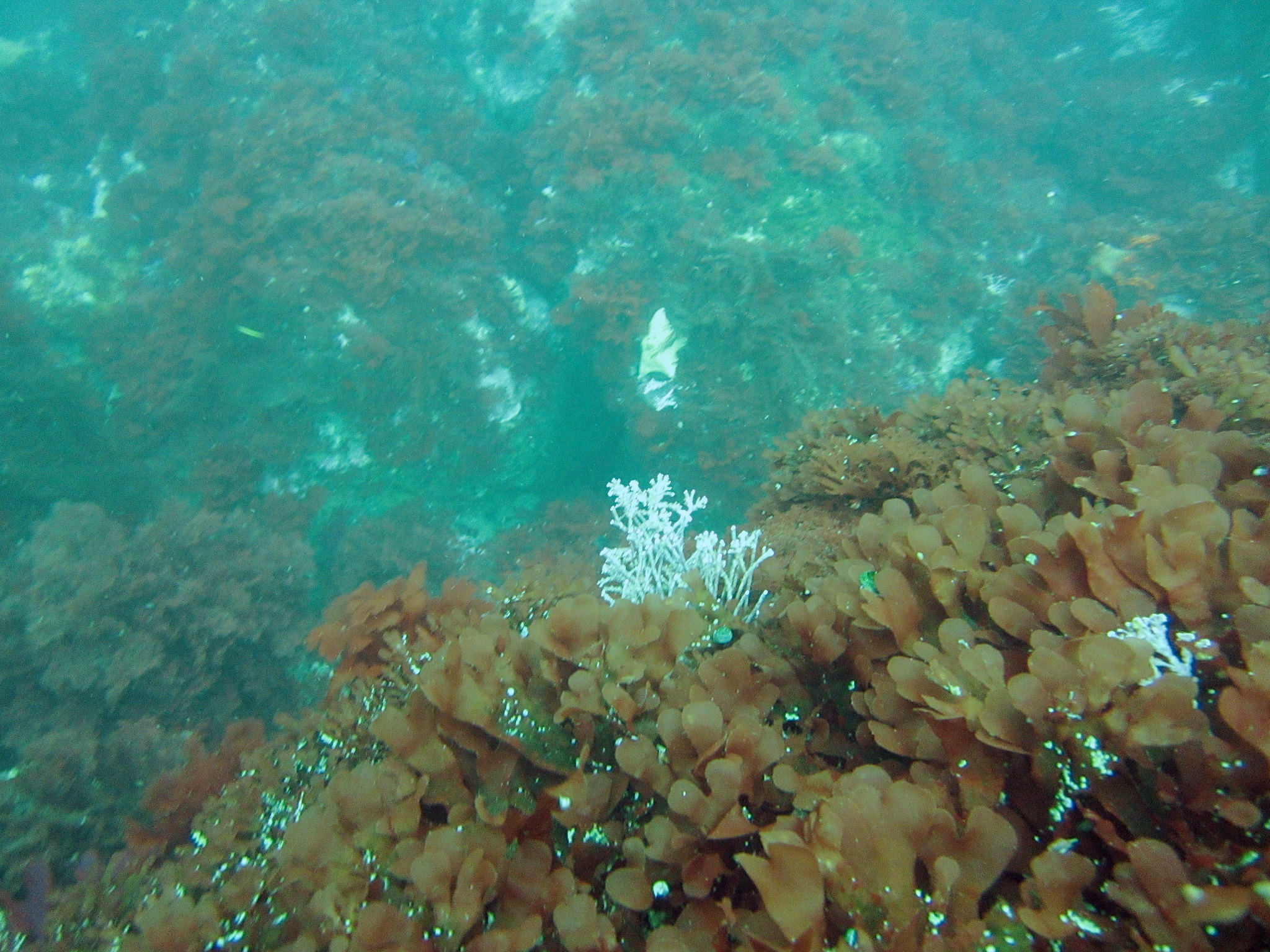
Seaweed turf.
Amazon Rainforest to Savannah
(Based on a presentation by Paulo Brando for the Columbia School of Climate on Feb 23 2023 titled “The Amazon Tipping Point: Moving Beyond Myths Towards Solutions”)
Another definitive example is the shift in the Amazon from rainforest into savannah. This is another dramatic change of species and ecosystem function breakdown into another form. It is startling how mechanistic and predictable the shift is. The Amazon forest can be predicted based upon the water content and temperature. (with some interactions with fire frequency and severity) Essentially the increase in temperature decreases the forest cover which decreases the water storage which decreases the forest cover again.
The numbers:
Amazon Forest Cover = increase 50% water retention
Water retention increases Biomass (Forest Cover)
10% loss of Amazon Forest Cover = decrease 1.5% precipitation
10% loss of Amazon Forest Cover = 0.5 C Temperature Increase
100 ppm CO2 = decrease 3% precipitation
1 C Temperature increase = Decrease 5.5 Pg C (PetaGrams/Metric Gigatons Carbon)
Forest Cover = stops at ? degrees/precipitatio n Temperature Increases = Increased Fire (more fire starts, drier and more fuels, more intense fires, more extensive burns)
Drought and fire remove 20% of Forest Cover.
Degraded Areas = 3x more water per biomass production
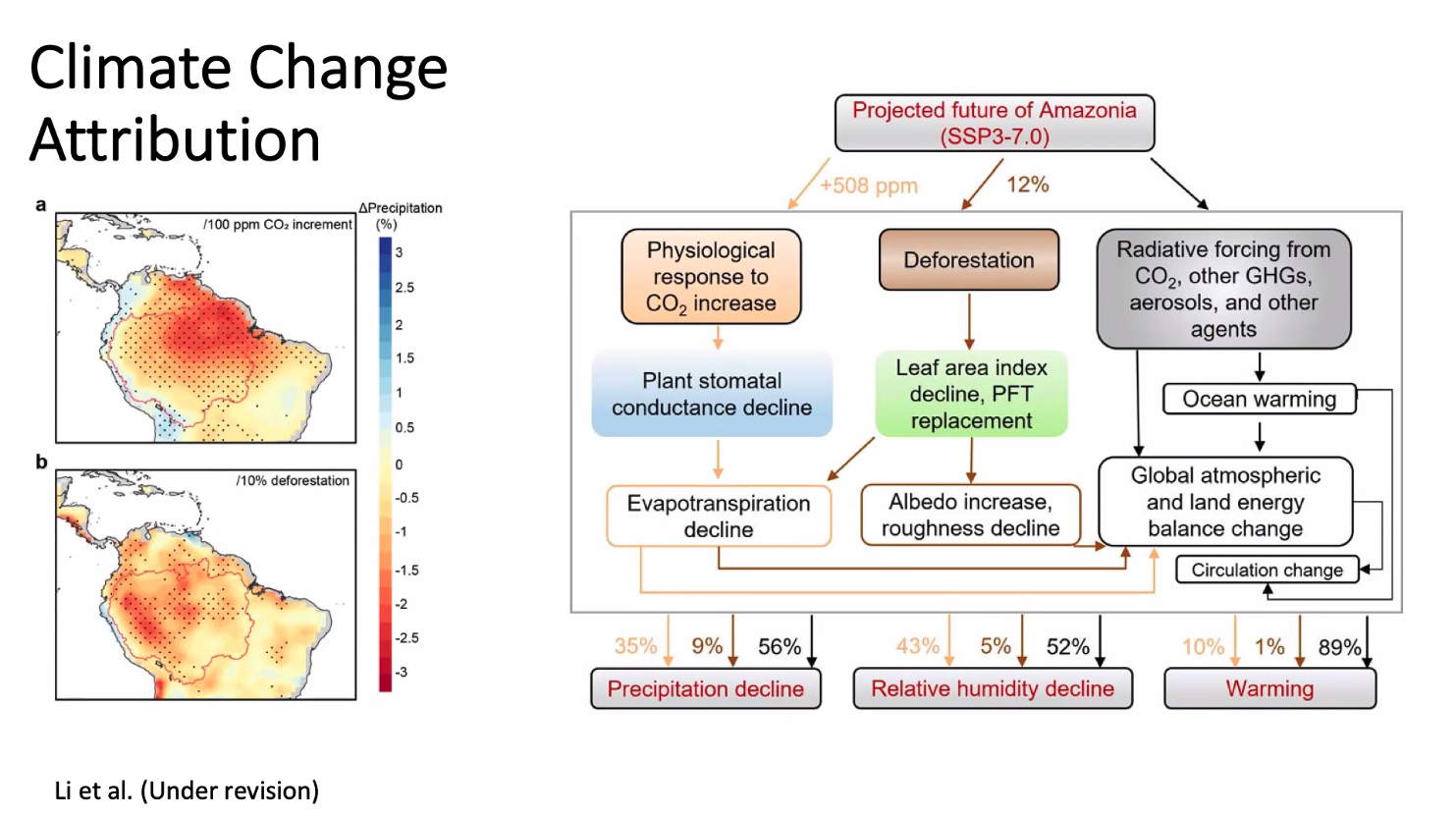
Quantified.
New Zealand Avifauna
https://newzealandecology.org/system/files/articles/NZJEcol34_1_28.pdf
Avians dominate herbivory on New Zealand. The moa probably significantly shaped vegetation species and distributions. 60% of birds are herbivores on New Zealand and 50% have become extinct. Some Moas ate a wide variety of twigs, leaves and grasses (not just fruit and seeds).
Human settlement 750 years ago removed the moa in 200 years which had a large effect on ecosystems as they were the only large herbivores. This changed the allocation of forest, scrub, and grasslands on the landscape. There are also cascading effects, for example seabirds used to supply nutrients, but forest growth has reduced the inflow of nutrients. The loss of avian herbivory also changed the species present within most habitats. There are many threatened species hanging on today. They often have many small dry unattractive fruits which are only eaten when large browsers inadvertently grab them within mouthfuls of vegetation (indicating their propagation mechanisms have been lost).
Then it was changed again with the introduction of ungulate herbivores later. New Zealand plants’ herbivory adaptations1 usually don’t include thorns which don’t deter avian browsers, leaving them vulnerable to ungulate browsers. Cliffs are being grazed for the first time by deer and sheep herbivory contrasted with moa and cassowary’s inability to access cliffsides. Many remaining cliffside species are endangered as a result.
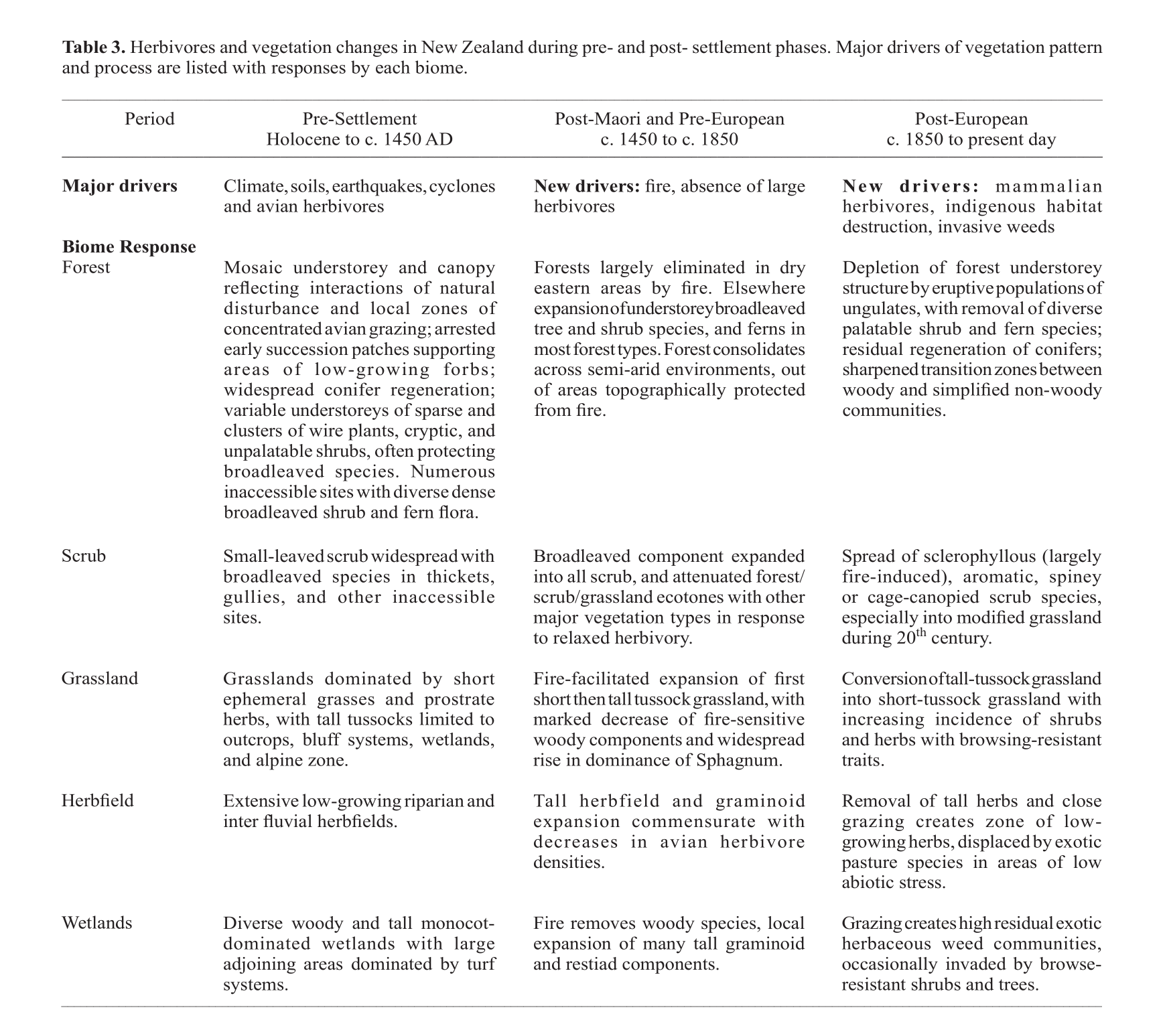
Moa and avian herbivory habitat effects. (Lee, Wood & Rogers 2009)
Everglade Submersion
http://ces.fau.edu/usgs/pdfs/session-e-resource-4.pdf
With the increasing sea levels, the everglades are getting saltier. Or they would be, if the mangroves didn’t increase the height of the everglades by accumulating soil in the form of leaves and root biomass plus catching sediment on the way out to the ocean. If they slow down or sea level rise speeds up, then they would start losing the race. Losing the race starts an unstoppable lock-in: “a decrease in vegetation health can rapidly cascade into peat collapse, ponding, and accelerated submergence.”
There are some other factors involved. Searmid crabs are a critical factor because they eat the leaf litter which can decrease the total accretion of sediment. And of course climate change is exacerbating things. Coasts deal with extreme events like storm surges, which they are becoming more susceptible to, and are happening more frequently, stronger, and penetrating further inward. Sawgrass is on the boundary of mangroves but it is much less salt tolerant and seems to need low levels of Phosphorus. “The P limitation was a key driver in evolution of Everglades ecology, favoring the establishment of a unique assemblage of species with low P requirements (e.g., periphyton, sawgrass).” Most estuaries are limited by nitrogen.
Furthermore, if nutrient availability changes or species present changes, the microbiome might shift to a different cycling state. “With adequate nutrient supply, microbes may also synthesize metabolically expensive enzymes to acquire complex C molecules of recalcitrant tissues” If they start taking up carbon, then soil accretion rate would reduce. “Sulfate is near the bottom of the energy cascade and is used only when the environment becomes sufficiently reduced (as indicated by an oxidation reduction potential (Eh) of <-100 mV) and produces only -0.7 x 10 -3 kJ mol -1 of energy.” Microbes might shift to anaerobic respiration if the salinity becomes high enough.
“In general, plant species richness and diversity tend to decrease with increasing salinity (e.g., Odum 1988, Wieski et al. 2010, Sharpe and Baldwin 2012). In the Everglades, sea level rise threatens the future of as many as 21 species of rare, low-lying coastal plants that lack adjacent suitable habitat for species migration.” If salinity inundation outpaces halophilic species colonization, the coastline may simply submerge and wash away.
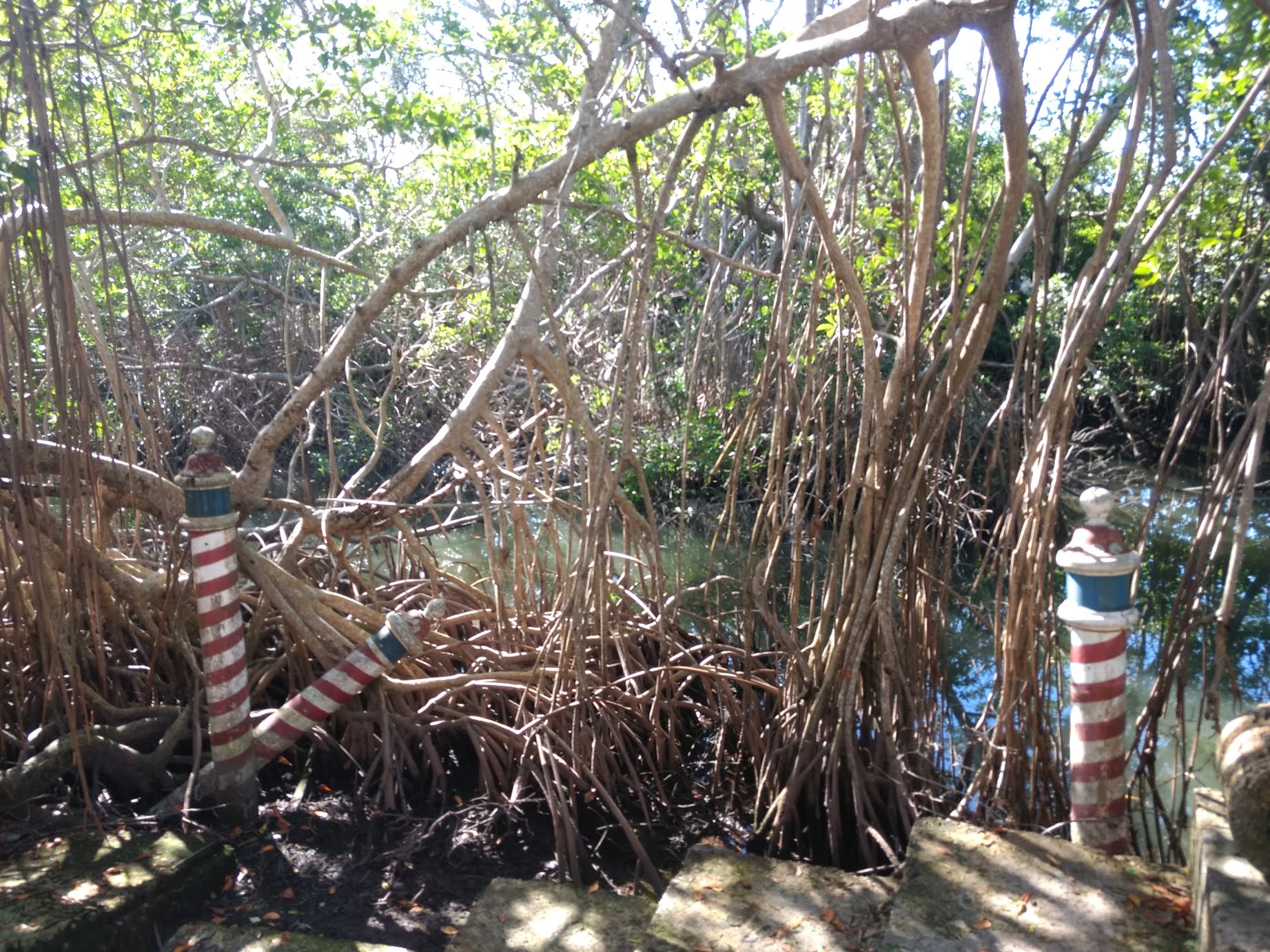
Mangrove roots doing their thing.
Ecosystem collapses versus regime shifts…
The Everglades example, while tragic, seems more mechanistic to me than a biological cascade. It’s also not specified what the newly created aquatic habitat is like.
Other ecosystem collapses seem to be marked degradation in ecosystems but not a total change over in ecosystem type. Not that they aren’t shocking amounts of change from seemingly simple causes.
For example:
Zion Trophic Cascades
doi:10.1016/j.biocon.2006.07.002
The trophic cascade and ecological effects of mountain lions on Zion national park. The loss of mountain lions resulted in an increase of deer (80 -> 600 deer). The deer ate the cottonwood trees, causing a dramatic shift in total trees. (892 -> 23 saplings) which increased the erosion in the streams. This increased the heat, changed the vegetation, and changed the substrate size of the stream bottoms. That shift in gravel size changed the invertebrates which could reproduce in that stream area. Water plants, wildflowers, lizards, butterflies were all greater along streams outsize Zion than along streams inside Zion.
The 100th Meridian desertification
https://journals.ametsoc.org/view/journals/eint/22/5/ei-d-17-0011.1.xml
The average rainfall is about eighteen inches on its western margin, and increases to about twenty-four on its eastern edge. There is a divide to do with the circulation of the winds causing an arid divide down the center of the united states. One one side is shortgrass and bunch grasses (yucca) and on the other is tallgrasses, higher productivity, and greater general richness according to this author. This line is going to shift eastward (spreading aridity) as climate change occurs. “The combined effect suggests the “climatic 100th meridian” has shifted eastward amid a more general increase in aridity over the past three decades.” 2
| It’s not just rainshadow. | Something is going on at the 100th meridian |
|---|---|
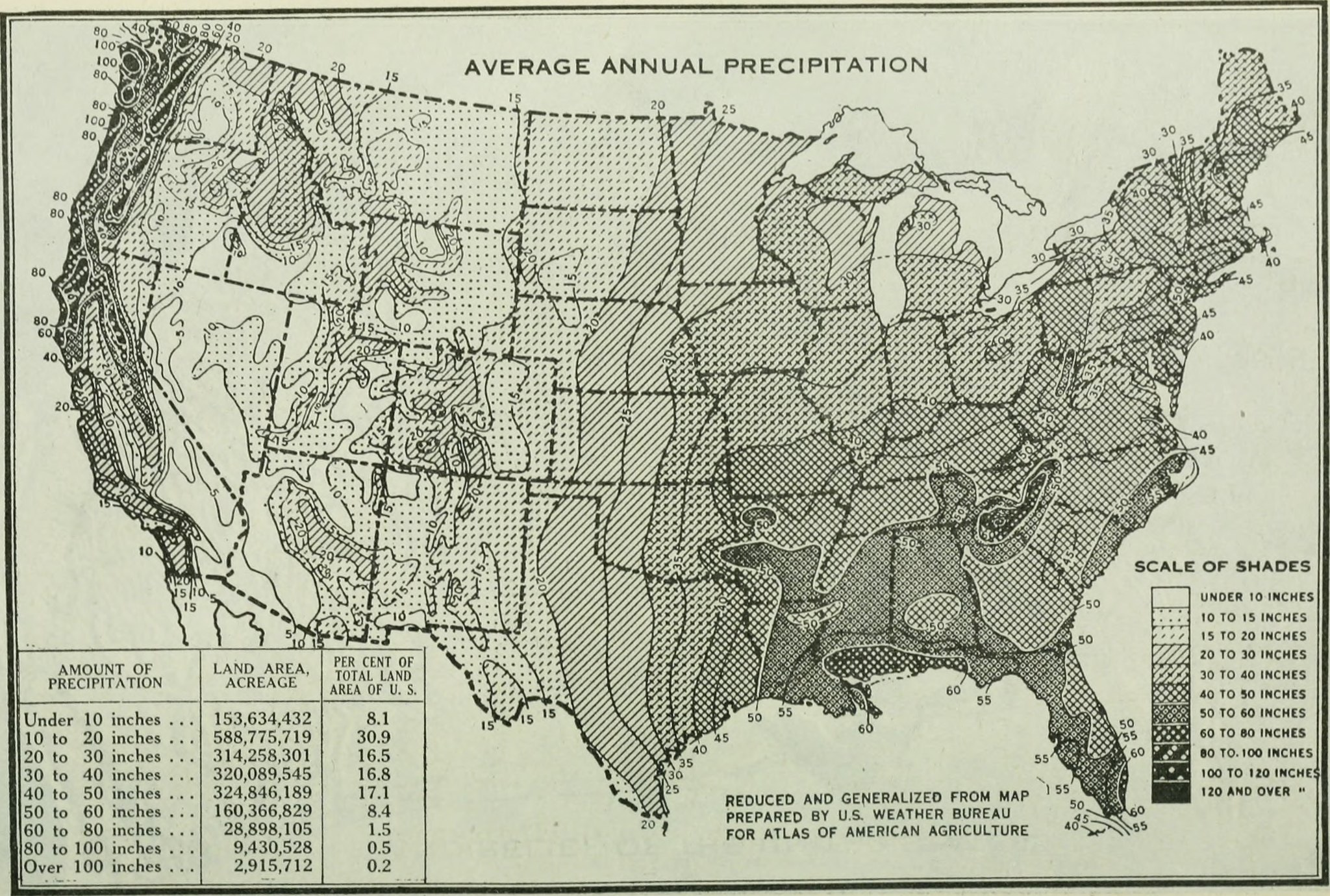 Precipitation. |
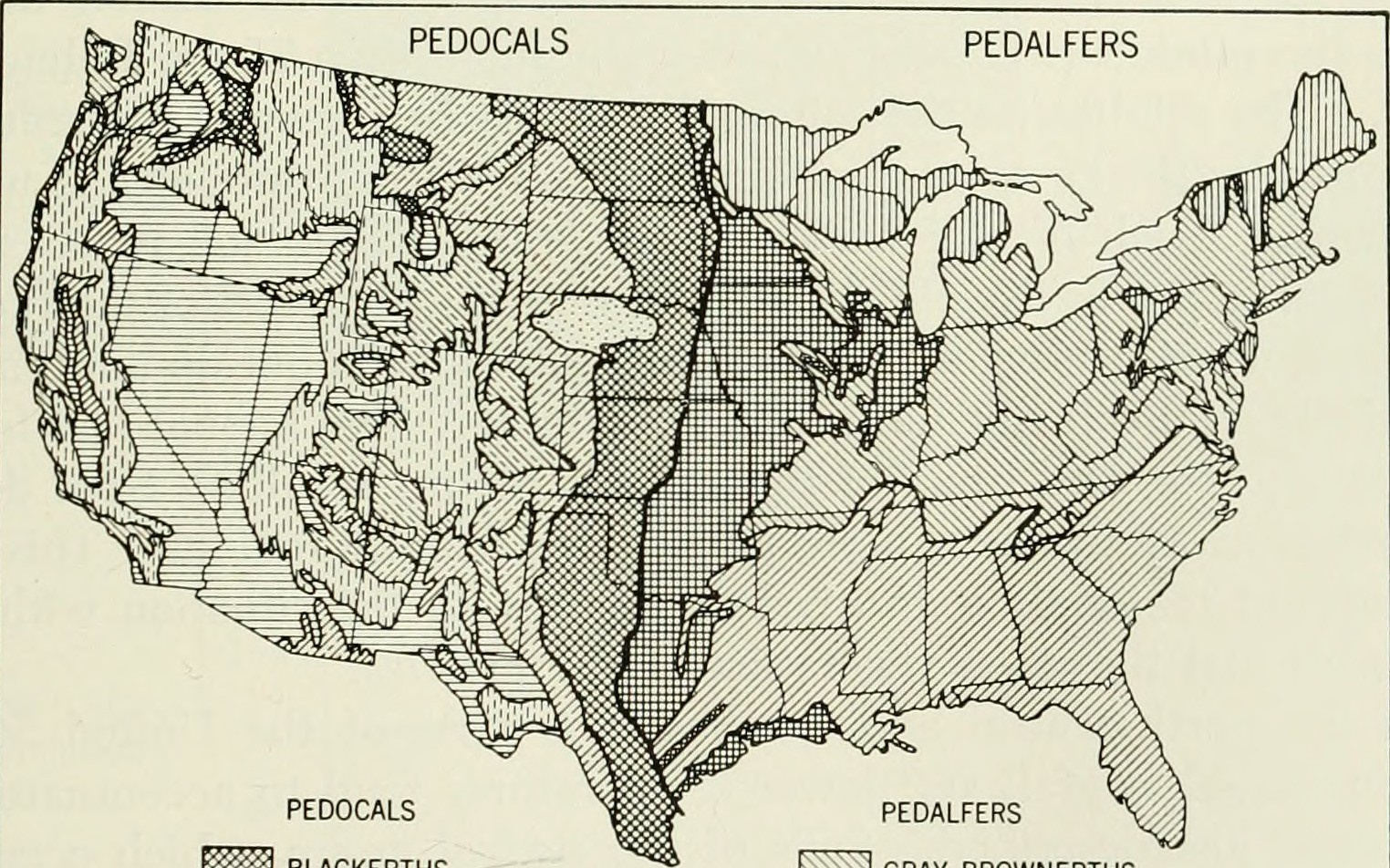 Soil type. |
Amazon Fragmentation
https://conbio.onlinelibrary.wiley.com/doi/pdf/10.1046/j.1523-1739.2002.01025.x
The fragmentation of the Amazon rainforest has larger effects than I anticipated. 80m distances would cause insectivorous birds to disappear from fragments. Other species are limited by 15m or 100m clearings. Many species are sensitive to fragment area - large mammals, but also birds, and several species of insects. Even 100 ha fragments result in their disappearance. Solitary birds, mixed flock birds, and several species of insects decrease precipitously near edges. Fires increase up to 2400m from edges. Effects would sometimes take over 5 years to propagate as interdependencies and species populations had not yet stabilized from the disturbance. Small populations fluctuate dramatically, and it appears these small populations are likely to be too unstable to persists in the long term. Surrounding forest changes would result in influxes of animals further destabilizing the communities. For example there are four species of frog that are obligate to peccary wallows. “Another key factor is that, in tropical rainforests, most species are locally rare throughout all or much of their geographic range.”
These linear cuts were so damaging in part because species don’t encounter clearings in rainforest so they are totally unable to cross them behaviorally. Other species simply avoid the kinds of species that occur in clearings (large leaves of pioneer species are bad foraging) and other species physically can’t cross those distances on the ground. And almost no species are migratory so they either live where they live or they don’t live there at all. (rather than moving around to take advantage of nearby benefits.) Second growth forest adjacent was not the same as old growth adjacent. 8-25% of all species were matrix exclusive species.
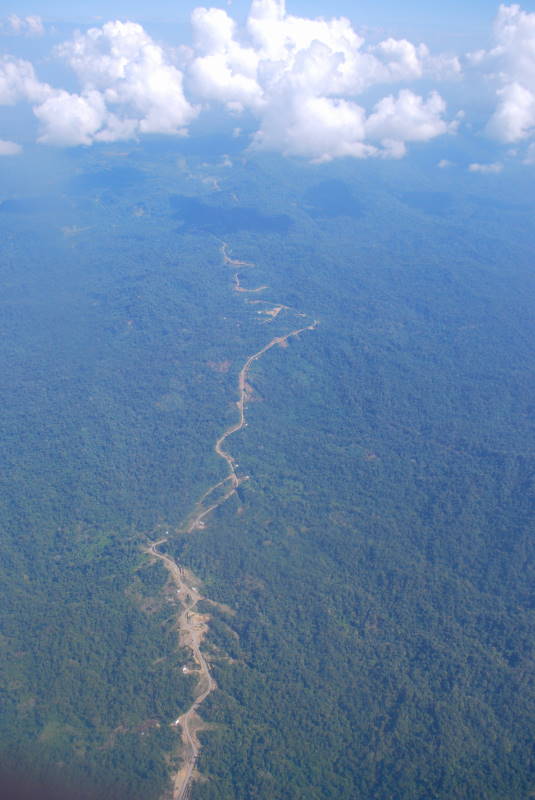
This image hits different now.
Reflections thusfar
I was originally finding it hard to collect examples of what I thought of as “true ecosystem collapse.” This surprised me because the term is bandied about so much. It was hard to find clear cut cases of what I was envisioning. Instead I mostly found shifts from one ecosystem to another, which I previously wouldn’t have considered a “real” collapse.
But I’m changing my mind about it. I think what I might have previously only called “regime shifts” are far worse than I thought. Basically, even though the replacement regime is a functioning ecosystems in their own right - and might even occur naturally elsewhere - they are a grievous degradation of the previous potential of that location. I don’t typically think of depleted versions of ecosystems as “collapsed” unless they have some kind of permanent damage. It’s tricky, because I wouldn’t look at savannah and think “what a terrible waste” while I would look at savannah that used to be Amazon rainforest and think “what a terrible waste.” Also as a result, I am also becoming more willing to look at savannah and urchin barrens think: what if we turned this into rainforest, what if we turned this into kelp forest.
I am not looking into the ocean “dead zones” because those do not remain dead zones. I am also not looking to polluted streams and mining tailing pits because its pretty clear that those are destroyed ecosystems. Maybe this is unfair. I was trying to looking for how collapses and cascading collapses happen within biological systems. Another point I didn’t cover was resilience decay. In ecosystems that are adapted to disturbance - like fire ecology and storm surge zones for example - there is ample evidence that repeated and more severe disturbance events can erode the ability of the system to recover quickly and completely. This erosion of resilience is being documented pretty well everywhere there are regular disturbances.
Conclusions:
1) Generally speaking, I think there are probably many more examples of ecosystem collapse out there which I haven’t encountered. These are only the known and documented examples of ecosystem collapse which I have personally happened across.
2) I found that ecosystem collapses look a lot like shifts from one ecosystem to an adjacent ecosystem, but paradoxically it can still be a cataclysm.
3) I found that collapses cut across species types, locations, and trophic levels, and take decades to play out. That’s really worrisome.3 I am still a big proponent that nature is not fragile and that ecosystem change is natural, but I am more hesitant to think that ecosystem collapse isn’t a concern. 4
4) The ocean seems more susceptible to ecosystem collapses. I think this might be because ocean temperatures are normally more stable than terrestrial ones. And also because habitats are immersed in one shared resource: ocean water. Which can undergo fundamental composition changes (shifts in oxygen content, shifts in the rate of calcium dissolution, etc).
5) I did not find examples of cascading ecosystem collapse, although I found spillover into adjacent areas. This could cause domino ecosystem collapses, especially as ecosystem reliance declines in the face of increased disturbances. […] Actually, upon further reflection, I did find cascading ecosystem collapse: Mangroves protecting saw grasses. Amazon rainforest becoming savannah, increasingly converting Amazon into savannah.
6) Ecosystem collapses exist in an awkward space where they aren’t “life threatening” but they are still “extremely damaging.” Which is probably why the term has been so confusing. Ecosystem collapses don’t halt all the processes that support life, but they do halt some of them. And then the ecosystem reforms to suit that crippled situation. (because life is amazing!) But that doesn’t mean that the area isn’t still severely damaged in a tangible way.
7) I’m not sure how to feel. I know ecosystems shift from one form to another naturally all the time. But now I am thinking that ecosystem collapses are indeed concerning. They are hard to differentiate. There are acceptible levels of desertification, for example. Its especially hard because many of these ecosystem collapses are “normal” transitions from one recognized ecosystem type to another. Maybe I should consdier that even natural habitat shifts are “bad”? Or maybe I should be thinking of natural vacillations as “normal” only within a limited range?
Further reading:
The Ends of the World: Supervolcanoes, Lethal Oceans, and the Search for Past Apocalypses by Peter Brannen
Ecosystem Collapse and Recovery by Adrian C. Newton
Managed annihilation: an unnatural history of the Newfoundland cod collapse
Rising: Dispatches from the New American Shore by Elizabeth Rush
- Herbivore defense against avian herbivory is to become long thin, springy, tangled, wiry branches with resistance to clipping. This is because bird herbivory is a peck and tug method versus a chewing action. Spines are much less of a deterrent to a pecking action and are thus much rarer. It is unknown whether bird herbivory dominance was a permanent suppression of mammals or if mammals were significant herbivores until some shift in herbivory in recent history. Now of course mammals once again are significant due to introduced species. [return]
- “The aridity gradient across central North America is not a simple result of the rain-shadow effect of the Rockies, which cannot explain the zonal gradient east of the Rockies. Powell’s mechanism of subsidence down the eastern slope of the Rockies of dry, warm air does indeed contribute to creating the aridity gradient. However, more fundamentally, the gradient arises from the increase in precipitation from west to east. Only during winter, when the midlatitude westerlies are dominant, does a strong rain shadow develop east of the plains. During this season, east of the 100th meridian, storm systems effectively transport moisture into the eastern plains and southeastern United States from the Gulf of Mexico and subtropical western North Atlantic. During the summer, the blocking of the easterly trade winds by the Rockies creates the Great Plains low-level jet and southerly flow across the plains. West of the 100th meridian, the flow is from the arid southwest, aided by a slight westerly orientation, but to the east, the flow is from the Gulf of Mexico, and higher precipitation results. Hence, the aridity gradient and the reality of the 100th meridian arid–humid divide arise from the rain-shadow effect and the beginning longitudes of the North Atlantic storm track in winter, and from the blocking of the trade winds by the Rockies and generation of southerly flow in the summer.” [return]
- (Especially for someone that is a pretty big believer in the reliance and recovery of nature against high disturbance.) [return]
- To be clear as mud, I started out thinking ecosystem collapse must exist, then I couldn’t find examples, and now I’ve come around to it existing but differently than I originally pictured. [return]